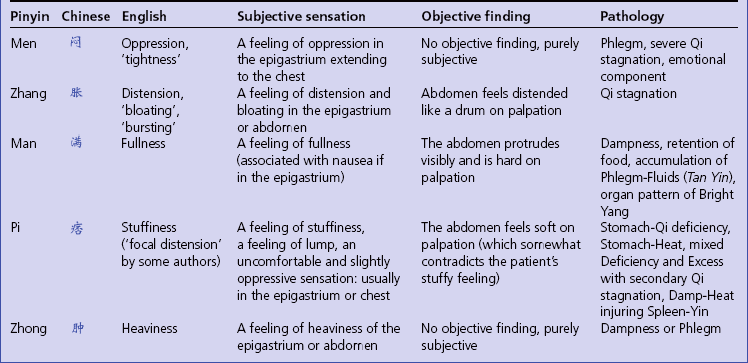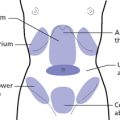 FOOD AND TASTE
FOOD AND TASTE
HOW WE ASK
The Stomach and Spleen are the Root of Post-Heaven Qi and their state affects all the other internal organs; for this reason, it is always necessary to ask questions to assess their state. This is all the more important given the frequency of digestive complaints in Western patients. The Stomach controls the rotting and ripening of food and for this reason it is compared to a bubbling cauldron in the Middle Burner. The Spleen controls the transformation and transportation (Yun Hua) of Qi and it therefore affects the transportation and transformation of food essences in the Middle Burner. Thus, the Stomach and Spleen together are responsible for the proper digestion of food. However, in Chinese medicine, the function of the Stomach and Spleen goes beyond that of digesting food as, in the process of doing so, they are the source of Food Qi (Gu Qi), which, in turn, forms the Gathering Qi (Zong Qi) and True Qi (Zhen Qi). Thus, the Stomach and Spleen are the source of Post-Heaven Qi and an enquiry into the state of these two organs is crucial in every case.
MAIN PATTERNS OF DIGESTIVE SYMPTOMS
The main patterns causing digestive symptoms are:
Retention of food
Retention of food causes a feeling of fullness in the epigastrium if the Stomach is affected and in the abdomen if the Spleen is affected; the latter affects children more than adults. In the case of the Stomach, there may sour regurgitation, nausea and poor appetite.
Table 30.1 illustrates the differentiation of symptoms between Stomach and Spleen in the various patterns.
Table 30.1
Differentiation of Stomach and Spleen digestive symptoms according to pattern
| Pattern | Stomach | Spleen |
| Qi deficiency | Slight epigastric discomfort, dull, slight pain improved by eating, poor appetite | Poor appetite, slight abdominal distension, loose stools |
| Qi stagnation | Epigastric distension | Abdominal distension |
| Qi rebellious | Hiccup, belching, nausea, vomiting | Loose stools, diarrhoea |
| Blood stasis | Stabbing, fixed epigastric pain, vomiting of blood | Stabbing, fixed abdominal pain, blood in stools |
| Dampness | A feeling of fullness and heaviness of the epigastrium, sticky taste, poor appetite | A feeling of fullness and heaviness of the abdomen |
| Phlegm | A feeling of oppression of the epigastrium, sticky taste, nausea, poor appetite | |
| Retention of food | A feeling of fullness and pain of the epigastrium, sour regurgitation, nausea, poor appetite | A feeling of fullness and pain of the abdomen |
Thus, the five main sensations experienced in the digestive system are a feeling of distension, fullness, oppression, stuffiness and heaviness. Table 30.2 illustrates the pathology and diagnostic manifestation of these five sensations.1
FOOD
Inability to digest fats indicates Gall-Bladder Dampness.
Box 30.1 summarizes the patterns underlying digestive symptoms.
APPETITE
TASTE
Symptoms and Signs, Chapter 69
A sweet taste indicates either Spleen deficiency or Damp-Heat.
A pungent taste indicates Lung-Heat or Stomach-Heat, or both.
A sticky taste indicates Dampness or Phlegm, usually in the digestive system.
Box 30.3 summarizes the patterns underlying particular tastes.
NAUSEA AND VOMITING
Hearing, Chapter 53; Symptoms and Signs, Chapter 69
Box 30.4 summarizes the patterns underlying nausea and vomiting.
BELCHING
Hearing, Chapter 53; Symptoms and Signs, Chapter 69
Box 30.5 summarizes the patterns underlying belching.
SOUR REGURGITATION
Symptoms and Signs, Chapter 69
Box 30.6 summarizes the patterns underlying sour regurgitation.
NOTES
1. Examples of formulae for the above sensations are Ban Xia Hou Po Tang Pinellia-Magnolia Decoction for the sensation of oppression, Chai Hu Shu Gan Tang Bupleurum Soothing the Liver Decoction for the feeling of distension, Bao He Wan Preserving and Harmonizing Pill for the feeling of fullness (purgation is indicated), Ban Xia Xie Xin Tang Pinellia Draining the Heart Decoction for the feeling of stuffiness and Huo Po Xia Ling Tang Agastache-Magnolia-Pinellia-Poria Decoction for the feeling of heaviness. The acupuncture extra point Pigen is indicated for the feeling of stuffiness and disharmony of Liver and Spleen. This point is located on the lower back, 3. 5 cun from the midline, lateral to the inferior border of the spinous process of L1 (i. e. level with BL-22 Sanjiaoshu)




